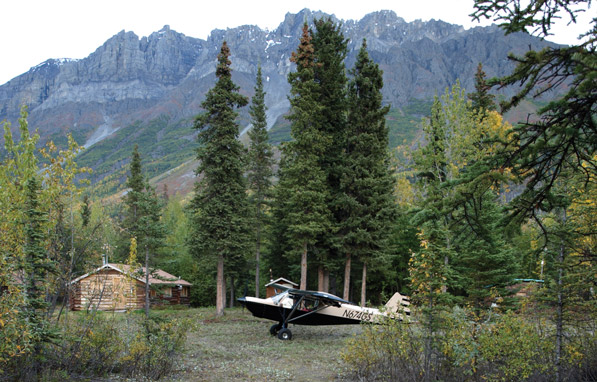
RANS Aircraft, guided by Randy Schlitter, has been in business since 1974 and has offered a variety of aircraft designs over the years including kitbuilts and, most recently, factory-built Special Light Sport Aircraft (SLSAs). The subject of this survey is the company’s venerable S-7 Courier, a design that grew out of the need to flight-train buyers of the single-place Coyote I—the S-7’s cockpit layout was designed to mimic the Coyote’s.
The S-7 has much to commend it. The original weighed 390 pounds and flew with the 50-horsepower Rotax 503 engine. Today’s S-7S version sports a 100-hp 912S engine and two tandem seats in a conventional (taildragger) landing configuration—the cabin is also wider and there are many small improvements under the skin. Sipping between 5 and 6 gallons of fuel per hour at 75% power, the Courier cruises at 110 mph, stalls clean at 50 mph, has an 8:1 glide ratio, 850-fpm climb rate and 325-foot takeoff roll, with about the same for the rollout, according to the company. The gross weight is 1232 pounds, with an empty weight of 700 pounds, leaving a useful load of about 500 pounds. These statistics place the airplane in the running for would-be Sport Pilots.
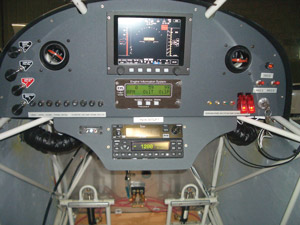
Kit price, less the firewall-forward package, is $21,000. A firewall-forward kit adds $4500. Plug in the prop ($1900) and the Rotax 912 ($19,000), and you’ll have $46,660 into a current S-7 kit before avionics, paint and interior. Some of the builders have taken advantage of the opportunity to customize their airplanes with things like larger tires, upgraded seats, larger fuel tanks for greater range or cabin heat. However, one gets the sense that little was needed in the way of mods to have a perfectly suitable airplane from the kit.
Before we get started, a disclaimer. This is not a scientific survey. RANS provided us with a list of builders, and we contacted them, following up with email distribution of the surveys. We chose 23 builders altogether, and 13 of them completed and returned the survey.
Nine of the builders have completed their projects and are flying, but four are still in the process of building. We felt it was valuable to have both camps represented in our survey, but obviously the latter group was unable to answer questions about aircraft performance and lacked the complete perspective to discuss questions such as what they’d change if they built again. That 13 of those contacted chose to participate represents a 56% response rate, which isn’t bad for a direct email solicitation, and it shows that these builders are proud of their projects and eager to talk about them. Given the spectrum of builders and varying experience levels, the S-7 appears to hold broad appeal.
A Little Background
By way of an overview, we can list some general characteristics of our group. All of them were pilots prior to purchasing the kit (though one had not yet earned his Private ticket). All of the builders save for one are males. The age range of the respondents is 34 to 76 years old, with the average being 57.7. Their heights range from 5-foot-6 to 6-foot-4, and weights range from 125 pounds to 235. (We weren’t trying to pry, but wanted to get a sense of how the airplane “fits” various physiques). Their numbers of accumulated flight hours was from 420 to 22,000, with an average of 3306 hours (skewed a bit by that top number). They were about evenly split between those for whom this was their first homebuilt project and those who had built before, six and seven, respectively. There was unanimous agreement, with few quibbles, that the kit was complete and all parts were labeled clearly.
Nine builders bought the standard kit, two bought the quickbuild version, one bought the kit with the fuselage epoxy-primed and the wings framed but not covered (somewhere between standard and quickbuild) and one builder bought a partially completed kit. Rick McBride, having built before, may have expressed a sentiment common among those who went the standard kit route. “I determined that building is as much an enjoyment for me as flying,” he said. “Accordingly, I wouldn’t consider the quickbuild option.”
Seven of the respondents built in a garage, two in a workshop, three in a hangar, and one builder constructed the plane in a walkout basement. Eleven builders reported that they worked primarily alone (with occasional help from a spouse or friends), and two said they’d had help. One of our respondents is building two airplanes with a partner. Eleven of the respondents built or plan to build their own instrument panels, and 10 did the engine installation themselves. Only seven of the builders did the paint job on their aircraft.
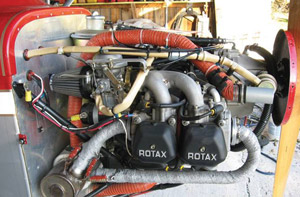
Not everyone kept track of the hours they had invested in the project, but calendar time they knew. The range of build times in hours/calendar time ranged from 10 months (number of hours not reported) to 1600 hours over a three-year period. Surprisingly, given the range of responses to this question, eight builders said the estimated build time the company stated was close to their own, but three said, essentially, “no cigar.” One builder recommended adding 25%, one suggested doubling the estimate, and another even tripling it (but this last builder described himself as “picky”). All of those who are currently flying their airplanes conducted the first flight themselves, but only half of them availed themselves of transition training. At least four builders trained in an Aeronca Champ prior to flying their own planes, and some trained in a J-3 Cub. All of the builders who have flown hangar their airplanes.
The Builders
Dale Atchetee, 65, is a retired police officer who will celebrate his second wedding anniversary on Valentine’s Day. He lives in Texas and has amassed 1100 hours in both certified and homebuilt aircraft. He has a Private ticket and owned a Cessna 150 and a Piper PA-22/20. He previously built a Kolb Firestar, which he flew for 400 hours, but after awhile he wanted a two-place. Regarding the decision to build an S-7, he says, “The factory tour did it for me. His [Randy Schlitter’s] factory in Hays, Kansas, was absolutely spotless, well arranged, and beehive busy.” He added, “There were a bunch of RANS aircraft flying with zero problems, which is probably the most important criteria when selecting a kit.” He ordered a standard kit once he got home.
Frank Beeler, 57, is a print/mail services supervisor and lives in Knoxville, Tennessee. He earned his Private license and commercial and instrument ratings at the Shaw Air Force Base Flying Club. In the late 1980s, he built a Moni Motorglider and added a glider rating. His 600 hours were mostly in Cessna 150s, 152 and 172s. He enjoys photography, and says, “I’ve always been good with building things.” He has built a workshop and a “man cave” in his hangar.
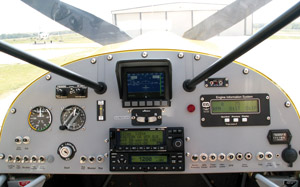
Robert Buckbee, 57, is a district manager for an oil field services company. He lives in Ontario, Canada, and earned his Private license in 1998, followed by an instrument rating in 2002. In the last 10 years, he’s accumulated 1000 hours, 850 in tailwheel aircraft and 50 hours towing gliders in a Cessna 182 and 8GCBC Scout. He owned and flew a Pacer for seven years, until he finished his S-7, which now has 250 hours on it. He’s built dozens of radio-controlled airplanes including a 15-foot wingspan Douglas A26 Invader twin-engine bomber. This was his first full-scale homebuilt project.
Peter Cowan, 68, of Lakefield, Ontario Canada, is a retired systems engineer who worked for IBM. He has been flying since he was 18 years old, and he has owned numerous RANS S-7s over the years, all of them purchased partially complete or flying. He still flies a 1994 model with the 80-hp engine and a “work-in-progress” 2004 model. He loves flying on floats and feels the RANS is just the right combination of size and handling for that type of flying.
Jon Farley, 51, is an anesthesiologist who enjoys live music and barbecue in his hometown of Albuquerque, New Mexico. He is rated multi-engine, instrument, commercial and has 1100 hours in a PA-28, Citabria, Cessna 172 and RV-8. He built the RV-8 over an eight-year period and over the last 2.5 years has put about 425 hours on it. Still, he says he always liked the looks of the S-7 (it reminds him of the Citabria). He got to fly the factory demo plane and really enjoyed its handling. The company’s reputation in the industry and the quality of the finished aircraft were crucial factors in his decision to buy the S-7 kit. He is still building.
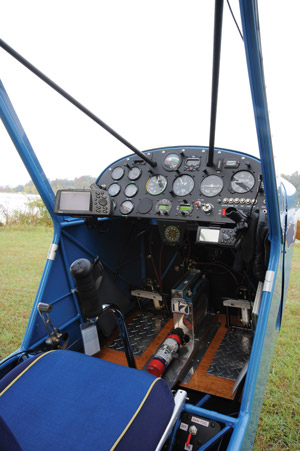
Carol Ann Garratt, 54, of Ocala, Florida, is retired from a career in industrial manufacturing. Although she mentioned not a word of it in her survey, she is an accomplished aviator, having circumnavigated the globe in a Mooney more than once to raise awareness of ALS (Lou Gehrig’s Disease). Contributions from her most recent effort topped $230,000. She has about 3500 hours of flying time, and her ratings include commercial, instrument and CFII. She also won the 2006 Air Race Classic in a Mooney Ovation. The S-7 is her first homebuilt project, and she says the fact that there was no welding was a big consideration. “The flight specs were better than a Cub,” she says, “and I wanted a high-wing tandem taildragger.”
Bernard “Buzz” Glade, 64, is a general contractor from Florida whose hobbies include hunting and fishing. He has more than 3500 hours and was a C-130 pilot in the Air Force. In addition to his Private ticket, he has commercial, multi-engine, instrument and glider ratings. He owns a PA-32 and a Falco, which he built and first flew in 1986. He also restored a Taylorcraft, which he kept for 10 years before selling it. He liked the RANS reputation and design, and he is still building his project.
Rick McBride, 49, lives in Virginia and is retired from the U.S. Army, now self-employed as a consultant to the Department of the Army. He has about 1150 hours total time, and in addition to his Private license has an instrument rating. He has flown numerous Cessnas and Pipers, owned a Piper PA-22 Tri-Pacer, and built both an RV-6 and an RV-8. He sold the RV-6 but retained the -8, which now has about 440 hours. When deciding what to build next, he wanted something to complement the RV-8, and the S-7 met his requirements for a high wing, two-place, tandem-seat and short-field performance local flier. He is still building.
Norman McDonnell, 53, lives in Lynnwood, Washington, and is a systems engineering manager for Boeing. He has been around airplanes most of his life, starting out as a lineman at Helena Regional Airport in Montana. He’s worked on a lot of big airplanes, and helped people rebuild smaller ones, but this is his first homebuilt project. Because he mostly bores holes in the sky for fun, his requirements included low maintenance and ease of repair. He always loved the Bellanca Scout, and says the S-7 is “the next best thing.” He has not completed his airplane.
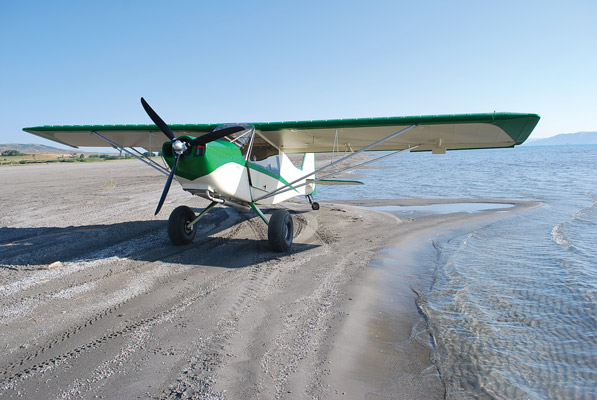
Tom Simko, 59, is a crane operator who enjoys snowboarding and mountain biking. He was an avid ultralight pilot in the 1970s and ’80s, until he got his Private license and then built a Kitfox, Titan Tornado, Avid Magnum and a short-tail S-7, accumulating 2902 hours in the process. He was a carpenter for 30 years and built other big projects. Bang for the buck is why he chose the S-7 along with the history of the company’s service and them “being there.”
Greg Swingle, 34, is the youngest of the group, but he’s making up for lost time. He’s a multimedia artist/video editor who likes riding bikes and helping his father out on the family farm in Philo, Ohio. When he bought the S-7 kit, he hadn’t yet soloed, but he now has 710 hours along with tailwheel, complex and high-performance endorsements, and his instrument rating. “I kind of got addicted,” he said. This is his first homebuilt project. A friend of his named John was his “portal into the world of aviation.” John researched available kits and told Swingle to build an S-7S. “A week later I was headed to Kansas with my dad’s cattle trailer to pick up the kit,” Swingle said.
Ollie Washburn, 76, is a retired corporate pilot who lives on an airpark in central Florida and “wakes up with airplanes and goes to sleep with them,” though he does ride a motorcycle once in a while. He started flying lessons in high school and then joined the Air Force and got his Private ticket through an AF flying club. He wound up his aviation career after 37 years as a senior captain on a Gulfstream 3. He’s owned numerous certified aircraft, is half partner in a Christen Eagle, and his present “fleet” includes an RV-6A and the S-7. He has 14,000 hours and both ATP and helicopter ratings. This is his first homebuilt project.
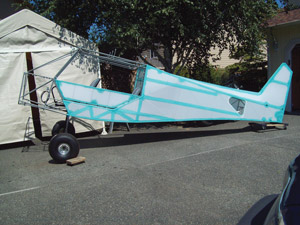
Steve Wyman, 63, is a retired airline pilot in Centennial, Colorado, with more than 22,000 hours. He builds furniture as a hobby, and this was his first homebuilt project. He must have liked it, because he’s now building an RV-12. Wyman was looking for “back to basics” type of flying, and the S-7 fit that objective. He was impressed by a visit to the RANS factory, and that sealed the deal.
The Kit and Engine
All of the builders used the 100-horsepower Rotax 912 engine, but some considered other engines such as the Suzuki (it was dismissed by one builder as being “no small feat” to install) or the Jabiru 3300, which Buckbee considered but rejected after finding out that RANS doesn’t provide a mount for it. He didn’t want to design and build one, and possibly have to modify the cowl. (Jabiru does sell a firewall-forward kit for the four-cylinder 2200 engine that uses the standard RANS cowling.)
Some builders bought their engines from RANS, while others bought from an outside vendor. Swingle briefly considered the Jabiru, but then he decided on the Rotax because of its popularity and reliability: “50 million Elvis fans can’t be wrong!” he explained. “I’d go with the masses on this item.” He had to install his engine twice because he skipped a step in the instructions (the oil tank has to go in first), and his dad helped him wrestle the engine into place both times.
Atchetee agreed with popular sentiment, saying “Rotax has hundreds of 912s flying, and RANS was supporting this engine.” (He also said Rotax has a long way to go to support owners with manuals and troubleshooting guides.) But at the same time, he added, “The engines are pretty much bulletproof.” Simko said he’d had a 100-hp Subaru (Stratus conversion) on his first S-7, and it was trouble-free for 1300 hours. But this time around, “I had more money to blow, so I opted for the lighter and smaller, but equally powerful, 912S, meaning it fits inside the cowl like the Subaru but with a lot less drag.” The lighter weight “keeps the CG where it needs to be, too,” he said. The other advantage, as Simko saw it, was that given the Rotax factory’s support for the subsystems, it would speed up the installation tremendously. “The engine work was straightforward, and actually one of the least challenging parts of the entire process,” he added.
Unlike Simko, Wyman cited the engine installation and wiring as among the most difficult aspects of the build. “It was the first time I had ever done anything like that,” he said, “but after 230 hours, it all still works!” Beeler also claimed one of his biggest challenges was the electrical wiring for the engine and instruments. Despite challenges, all of the builders who have reached this point installed the engines themselves.
The builders used a variety of props, including 68- and 72-inch (tapered) Warp Drives, composite Sensenich ground-adjustable three-blade units, and a three-blade Powerfin. A wood Sensenich two-blade prop came with the kit, Beeler said.
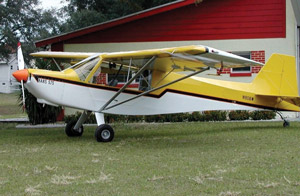
The Panel
Eleven of the builders also assembled their own instrument panels. Buckbee had a friend do some CNC milling from a layout he provided. He installed the components but had a shop do the wiring harness for his radio and transponder. Atchetee took a good amount of time building this part of the project. “It took more than 18 days just for the panel, yet some guys are building a complete airplane in 18 days,” he said. “Go figure.”
You might wonder how these builders equipped their panels, and they run the gamut. Glade had to build a new panel because the Grand Rapids EFIS he was using required a different configuration. Simko described his panel as “basic,” and he uses a handheld GPS to supplement the standard instrumentation. Swingle’s plane is VFR, but he says, “I’d be a dead man without my Garmin 396. I love it.” Farley’s not at the stage yet where he’s building the panel, but he plans to use a Dynon FlightDEK-180, Garmin GPSMAP 496, SL40 and GTX 327. Wyman has an Icom IC-A200 com radio, Garmin GTX 320 transponder and a Lowrance 2000C GPS. Atchetee’s panel is equipped with a Grand Rapids EIS, Icom IC-A200, Garmin transponder, airspeed indicator, vertical-speed indicator, turn-and-bank, a Lift Reserve angle-of-attack instrument, and a Garmin GPSMAP 196 (it’s not IFR capable; most of the builders went standard VFR). Beeler added panel lights, position lights and strobes so that he could fly at night.
Building and Factory Support
The answers to what was most difficult about the build ranged from “no major problems” (Atchetee) or “nothing yet” (Farley) to electrical wiring, paint and mounting the landing gear. Garratt advised measuring two or three times before cutting once, but she also said she encountered no major problems. Glade cited the covering and paint as not particularly difficult, but time consuming and a lot of work. McBride also said that fabric covering was a “newly acquired skill,” and mentioned that a Superflite seminar had been helpful in this regard. The challenge, he says, was in the tedium. McDonnell said drilling the gear legs for the bolt that holds them into the structure was among his biggest challenges so far. As he described it, “The hole is located right on the taper edge of the gear leg, so the drill bit wanted to wander downhill into the taper. This is a critical hole, and even though I had the gear leg clamped down to the drill press, it was still a nerve-wracking job.”
Swingle described the first month of building as many a first-time builder probably would: overwhelming. “You’re sitting there in your garage with thousands of parts,” he said. “I didn’t even know how to fly yet, so I just plopped down a fortune not even knowing whether I would like it or be able to enjoy it. Turns out it was one of the best decisions I’ve ever made, but the first few steps, and trying to understand the language and culture of engineers, plus the ins and outs of a new industry (aviation), was the toughest part for me.”
Washburn took a reasonable approach to building, which may have helped his appraisal of the work: “I started in May 2006 and first flew in February 2007,” he said. “I did not kill myself working, as it was hot and there was probably a month and a half off for Oshkosh and other things.” His was a quickbuild kit, so that was also a factor, but he said the most difficult or challenging aspect was probably installation of the windshield. As mentioned, McBride said that covering and painting were the most challenging simply because of the tedious nature of the work. He said that MEK was his “best friend” and that using preshrunk and bias tapes was a big help.
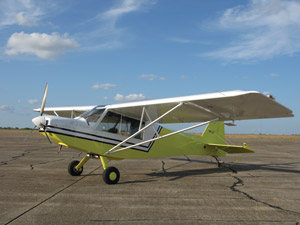
OK for First-Timers?
Despite their challenges or difficult tasks, the builders were unanimous in reporting that they’d recommend the S-7 project to first-time builders. Farley specifically cited the reasons for this, including “easy construction techniques, little to no jigging required and the ability to see results quickly.” McBride described it as a “fine kit for first-time builders primarily due to the level of prefabrication, ease of construction, clear instructions and availability of quickbuild options.” Swingle said, “The payoff of flying the thing is so huge I can hardly remember being frustrated during the build. I have heard horror stories of how long some kits can take, so I think I’d recommend the RANS. They make a neat little side-by-side that people like, too.”
Perhaps the unanimity of response to this question is due primarily to the kit itself, but it may also have to do with the quality of the construction manuals and plans, plus the availability of factory support. By the numbers, eight of those who had completed their projects said they had called the company up to 10 times during the build. One said he called somewhere between 10 and 20 times.
Atchetee claimed there was no comparison between the RANS project and his Kolb. The RANS kit, he says, was “complete with just about everything. I just followed the manual and spent lots of time planning ahead.” He also praised the support he received from RANS. Although he’s one of those who called fewer than 10 times over the course of the build, he said they were “always easy to connect to and had answers for me.” He added that there were sections of the manual he read several times but just couldn’t figure out, and the Tech would point him to an answer on a particular page or paragraph. He also “burned up the phone with PolyFiber.” RANS uses Superflite products, so they weren’t of much assistance in this area. Beeler used up his phone time with the factory trying to understand the electrical wiring. He said the manuals consisted of two books, one with text and one with part breakdown drawings showing how things are assembled and what part numbers to use. “In most cases, they were easy to follow,” he said.
Buckbee said the manuals were “great,” and said it would be beneficial to read and become completely familiar with them before starting to build. He also advised that a lot of the subassemblies could be completed prior to actually needing them. He specifically cited Ed Schwab at RANS technical support as being knowledgeable and great to work with. Cowan said that the word on the S-7 Yahoo list is that the quality of the manuals is good compared with other homebuilts, as is the kit quality, but “a few words more here and there would help.” Still, he said that every question asked on the RANS list gets answered—sometimes by the factory (so the company is obviously monitoring the list), and the drawings and parts list were quite clear. Glade gave the RANS documentation a B+, though several small details were unclear. He added that the kit, personnel, design and support are very good, earning them an A in his estimation.
McBride offered one complaint about the narrative in the manual, which is organized by component rather than sequentially, which would be his preference. “Consequently, you’re always jumping around in the manual,” he said. “Fortunately, the manual provides a clear construction flow chart.” He also thinks the factory could do a better job communicating with customers about plans changes. He cites as an example changes to the oil and fuel system installation. The engine installation kit had the new parts included, but the manual was not up to date, so he was left scratching his head. A couple of calls to tech support cleared it up, but he felt it would be much more effective for the company to “push” this information out to builders. He also said he’d like to see the company expand the availability of tech support. “Right now tech support seems to be one deep, and on top of that, they limit tech support to a few hours each afternoon,” he said. “That to me seems unreasonable and not customer focused.”
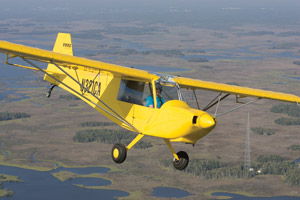
McDonnell (who is still building) said, “So far the folks at RANS have been absolutely outstanding in keeping me squared away. I have never had over a 24-hour turnaround for email that I’ve sent to Ed [Schwab], and Steve in parts really gets it done.”
Swingle started off slow, but got better at the manuals with time. “People always sang the praises of the RANS manuals,” he said. “I had a tougher time than most with them at first because…I don’t speak ‘engineer’ or ‘aviation,'” he said. “With hindsight, they were well written and quite thorough. Reading comprehension has never been my forte. I wouldn’t have been able to do it without the well-drawn figures and diagrams. Toward the end of the build, when most of the parts are off your parts wall, you can pretty much use the diagrams to build it. I think people work different ways. Some need text directions, some need verbal, some need diagrams.” Swingle added that he called the company “countless” times, and they were amazing. “When they were closed, I’d post a question on an online group for S-7 builders,” he said. “Those guys were just amazing, and pretty prompt, because there were folks in every time zone ready to ‘dweeb out’ on aviation questions.”
Peter Cowan suggested that one area needing improvement in the kit is the wiring. For example, the factory doesn’t ship or even suggest a full battery master shutoff. “The wiring standards are closer to automotive,” he said.
By way of mods, we’ve seen that all of the builders chose the same engine because it seems well-mated to the airframe. We’ve also mentioned the variety of propeller choices, from two-blade, wood, three-blade composite, ground-adjustable. Although his plane is stock for the most part, Swingle added bigger 8.50 tires and then later 26-inch Goodyears with a Matco tailwheel because he’s “headquartered out of a cow pasture.” He also bought Oregon Aero seat cushions, third-party strobes ($400) and fog lights for the cowl ($15).
Now How Much Would You Pay?
During the construction and after all is said and done, some builders are more meticulous than others about keeping track of costs. (Some don’t want to know how much the project costs!) Still, most had a good estimate of the total investment they’d made. Remember that the kit cost is $21,000, so much of the investment at the low end came from sweat equity. The lowest completion cost was $31,000, and that distinction went to Beeler. (Two of the survey takers didn’t answer this question.) At the high end, the total investment was an estimated $55,000, and that was one of our quickbuilders, which immediately adds a surcharge on the project but offers the convenience of getting to fly sooner. Other factors were avionics packages and options such as different tires or accessories. The average completion cost was $45,055, and there did not seem to be any significant tool purchases or extra items required for the build.
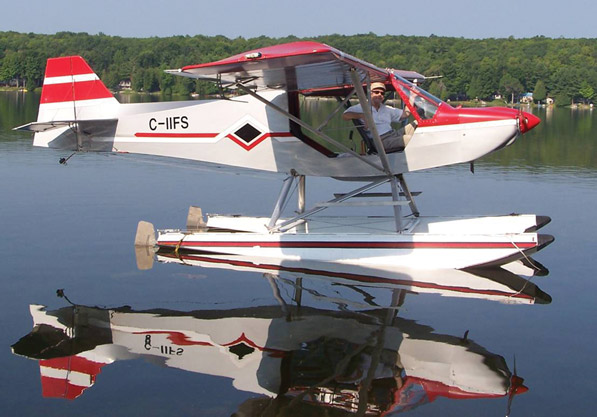
Performance
Eight of the builders reported that their performance numbers compared favorably with factory estimates. Most reported that the first flight, while exhilarating, was a non-event. Atchetee said a low wing in cruise initially was a problem, but he now has 600 hours over six years of trouble-free flying. Beeler, who got flight training in an Aeronca Champ and an hour in a RANS prior to his first flight, reported that the plane was “a little lighter on touch than most other aircraft I’ve flown.” He now has over 300 hours on the plane with no complaints.
Buckbee says the plane flies great, and the only change he made after the first flight was “one turn on a clevis to change the left wing’s washout.” He reports his top speed is 110 mph at 5500 rpm at 3000 feet; cruise is 100 mph at 5200 rpm and 3000 feet; rate of climb is 800 fpm solo and 600 fpm with a passenger at 70 mph. Garratt says a 200-pound passenger is her limit. She reported a top speed of 130 mph, cruise of 100 mph, 1000-fpm rate of climb and 250-mile range.
Simko said his top speed is 110 mph at full throttle. He likes an 85-mph cruise to keep the noise down and for good fuel burn at about 4800 rpm and 4500 feet. He gets a 1000-fpm climb empty and 600 fpm “high, hot and heavy.” He also mentioned that he really liked that when you fly with the doors off or open, the pilot’s seat is almost wind free, which makes for enjoyable warm-weather aviating. He said the passenger seat does get breezy, “but not too bad.”
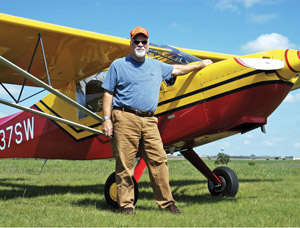
Wyman reported his numbers for flying out of Denver at a field elevation of 5450 feet at 5100 rpm. His top speed is 120 mph, cruise is 105 mph, climb is 600 fpm, and range is 4 hours, which is “longer than my bladder range,” he said. When asked if the plane had any unusual flight or ground-handling characteristics, Wyman responded with a simple: “It’s a taildragger.” Beeler said that, “Once you get used to the light and quick control responses, it is a very easy airplane to fly.” He also added that he doesn’t like to fly in the middle of the day in rough air, “because the airplane is very light wing loaded and can be a little rough for my taste.” Simko described his plane as a “pussycat…very benign handling while still capable of being thrown around when desired.” He added that he always uses standard taildragger methods on the ground, and always “three-points it” on landing. He especially appreciates the visibility while taxiing.
Maintenance
Aircraft maintenance for this group of builders appeared to be routine. Most reported changing the oil, other lubricants and spark plugs. Atchetee replaced his voltage regulator and the oil-pressure sender. Cowan re-rigged his plane, probably because he hadn’t measured properly the first time, he said. Garratt said that two service bulletins from Rotax necessitated new parts. She’s also done two condition inspections. Swingle said that he inspects for rubbing or chafing on wires and hoses often in his young plane’s life.
Memorable Moments
Most of the builders want to use their airplanes for local flying, purely for the fun and enjoyment of it. But some of them have taken fairly long trips, for example, from Florida to Oshkosh as Garratt did the year after she completed her plane. Buckbee flew from his home in Texas to Oshkosh in 2007. Simko enjoys going to IMAX movies in West Yellowstone, Montana, which is about 2.5 hours from his home. “I do it every year,” he says. “My route takes me right by the Grand Tetons, Jackson Lake, Yellowstone Lake and several of the geysers.” He said that the pilot’s campground at the airport is deluxe, with free firewood, bikes and hot showers. He also likes camping at Upper Loon Creek at the edge of the Frank Church Wilderness Area in Idaho. He enjoys “a long mountain bike ride there, not seeing another human all day, a near suicidal descent back to camp, and then a cold beer.” He recalled that once a black bear approached him at the camp, and doing his best caveman yell and waving his arms, he charged it, and luckily it worked, because he didn’t have a backup plan. The route home among 10,000-foot peaks was the icing on the cake, he said.
When he completed the 40-hour fly-off period, Greg Swingle flew to Alaska from the farm in Ohio. He called it “an eye-opening, life-changing, if not religious, experience.” A couple of months later, he flew to the Bahamas, which he said was “a rush,” but nothing beats the “vibes and views of the Western states.”
Cowan flew from Utah to Southern Ontario, Canada, an 18-hour trip, in one of his S-7s. After installing floats in the spring (he’s a floatplane guy and loves the S-7 for this purpose), he then ferried it to northwest Saskatchewan on floats over three days.
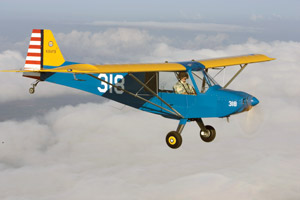
20/20 Hindsight
Almost all builders notice things that they’d do differently if they were to build again. After all, homebuilding is an “educational” experience. Atchetee mentioned a few items he’d like to do including installation of better seats, adding map pockets on the door, having a better sight gauge for fuel, door locks, making the instrument panel vertical to reduce glare and give more room behind the panel, and adding a better heater system. Beeler would modify the doors to have sliding windows so that he could open them for in-flight photography. McBride is installing vortex generators on the wings and horizontal stabilizers on his plane, and he said, “Time will tell what other changes I’ll make.” He has already chosen epoxy priming on the fuselage, an inertial reel for the front seat shoulder harness, and the bush tires and tailwheel option. Swingle’s plane has 586 hours on it now (he’s been busy). With the benefit of that flying experience, some changes have occurred to him, such as that he’d “probably go with a glass panel with at least an artificial horizon.” He added that he’d also try the Stewart system for covering (lungs are important!), and because most of his flying is on unimproved strips, he’d alter the maingear a bit. But his enthusiasm is unabated. “It’s a super plane!” he said.
Up for Another Build?
Apparently this project didn’t put people off of building, because several of the respondents either plan to build again or have already started the next project. Steve Wyman had mentioned on his survey that he wanted to build an RV-12, and when we checked back with him, he was well along on the project. He sold his S-7 to help pay for the last two subkits on the Van’s. Carol Ann Garratt hopes to build a 90% scale Spitfire some day, and she’ll probably rebuild the nearly 40-year-old EAA biplane she owns. Bernard Glade liked this project so much he may build another S-7. McBride would like to someday build a Safari helicopter just for the challenge, but he’s been focused on the S-7. Simko is enjoying his “time off” from building, and he wants to try to simply “wear his bird out.” But he also finds the idea of an electric-powered soaring machine of some sort intriguing. He produces all of his own electricity and then some, and lives at the base of a great soaring site, so he’s following progress in this area closely. Swingle is also enjoying his S-7 right now, but sometimes he thinks he’d like something faster or that would haul four people. Washburn has an RV-6A for longer flights, and so he doesn’t have any other airplanes in mind to build. Beeler says this will probably be his last project because the S-7 meets all of his needs at a reasonable cost, but if he were tempted by another, it would be the RANS S-19.
When All Is Said and Done
It’s fair to say these builders have found their projects to be gratifying experiences. Beeler, who also built a Moni motorglider, said, “The airplanes were fun to build, and the S-7 is a joy to fly. One unexpected reward was all of the interesting people I have met and the new friends I have made from all over the country just because of the shared love for building and flying homebuilt airplanes.”
Swingle also expressed a sincere sense of satisfaction with his building project. “I feel like I built this one right,” he said. “During the build, I didn’t know if I’d want to keep it forever, so I wanted to make it enticing to buy for the next guy. Knowing now that I will go without shoes or food before I give up my airplane…I would also chill out a little and worry less on the next build, because it’s all good in the end!”
Atchetee offered some wise words to prospective builders of any airplane project. “In deciding what kit you want, you must define your mission,” he said. “It sounds goofy, but it’s true. You must decide whether you want low and slow or high and fast; you cannot have both.”
Jon Farley has not completed his project, but he remains enthusiastic. “There’s good reason why RANS (and Van’s) have great reputations,” he said. “Both provide an excellent product with great builder support. I’d build another RV-8 or S-7 in a heartbeat.”
RANS and Van’s. That’s not bad company to keep.
For more information, call 785-625-6346 or visit www.rans.com.


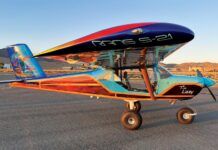
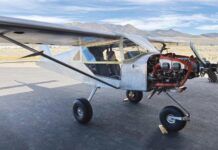
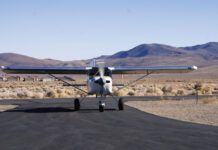
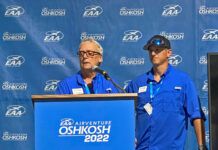
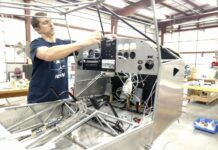
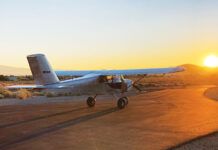
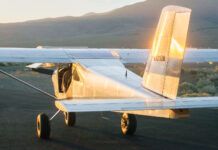
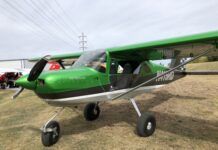
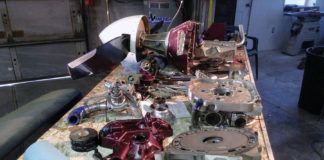
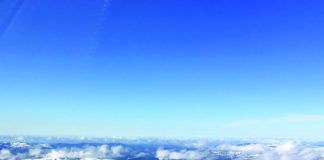
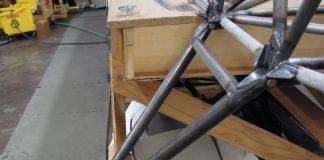
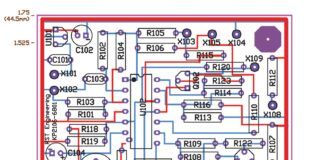
I have had a couple of airplanes but after owning a helicopter I’m done with airplanes the utility of the helicopter is so much better than an airplane. I can do a walk around on the helicopter and see every bearing and because of heat tape tell if any have gotten warm. Don’t have to remove any panels to se everything. Plus I only need 30 ft circle to land cruise at 100 knots and 8 gal per hour. Was able to land in a 60 knots crosswind just by pointing my nose into the find a hovering 3ft of the ground